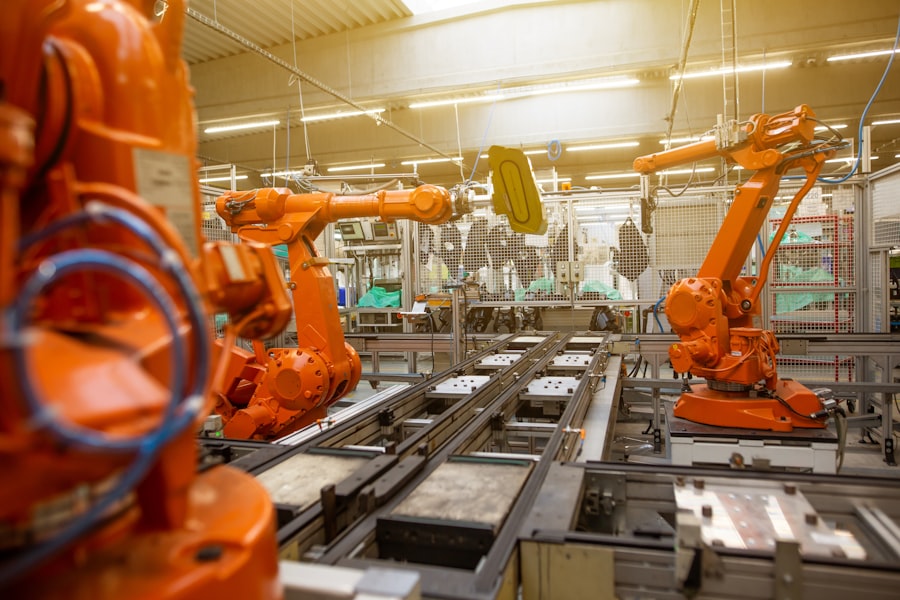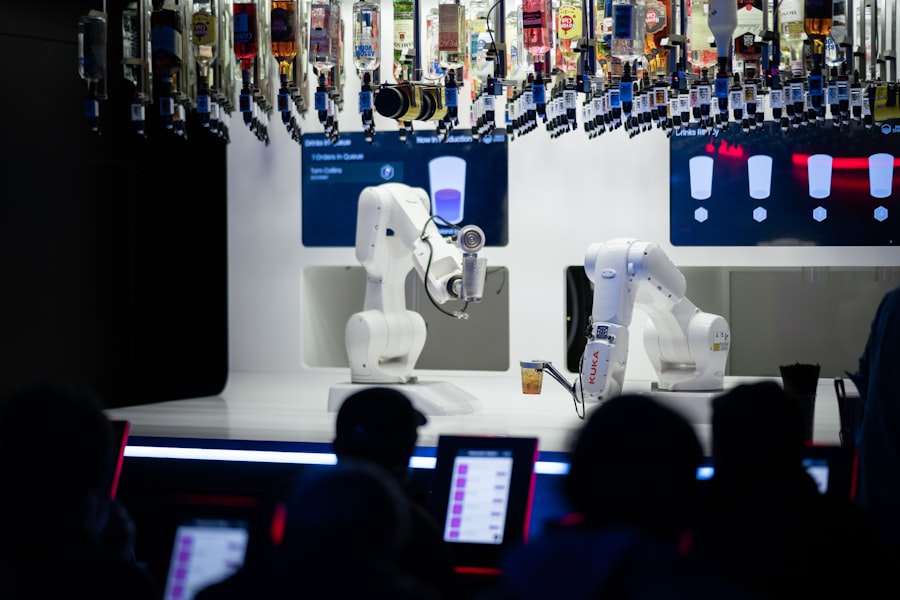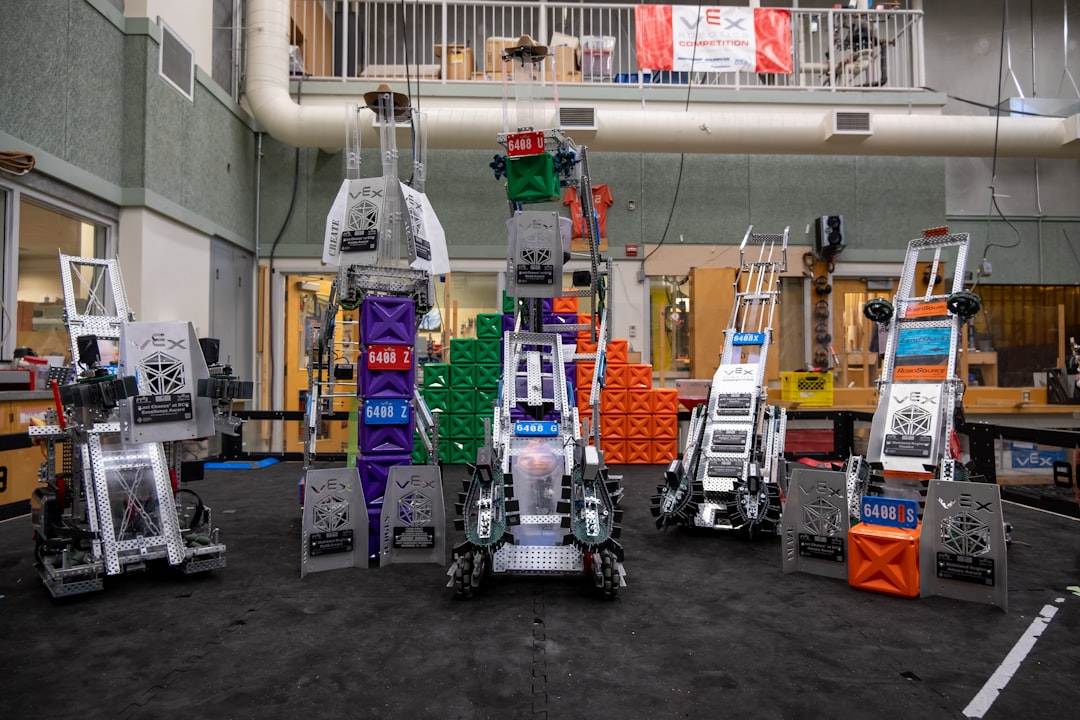As you step into the modern workplace, it becomes increasingly evident that automation is no longer a distant concept but a present reality. Over the past few decades, technological advancements have transformed how businesses operate, leading to a significant rise in automation across various sectors. From manufacturing to customer service, machines and software are taking on tasks that were once the sole domain of human workers.
This shift is not merely a trend; it represents a fundamental change in the way work is performed, driven by the need for efficiency, cost reduction, and increased productivity. You may have noticed that industries are rapidly adopting automated systems to streamline operations. For instance, assembly lines are now equipped with robotic arms that can perform repetitive tasks with precision and speed, far surpassing human capabilities.
In offices, software tools are automating data entry and analysis, freeing employees to focus on more strategic initiatives. This rise of automation is reshaping job roles and responsibilities, prompting you to consider how these changes will affect your career and the workforce as a whole.
Key Takeaways
- Automation is on the rise in the workplace, with robots and artificial intelligence taking on more tasks.
- The impact of robots on employment is a topic of debate, with concerns about job replacement and economic instability.
- Artificial intelligence plays a significant role in job displacement, raising ethical and social implications.
- There is a fear of unemployment and economic instability due to automation, but potential benefits for society also exist.
- The workforce needs to reskill and adapt to the changing landscape of work, and regulation and policy are crucial in the age of automation.
The Impact of Robots on Employment
The introduction of robots into the workplace has sparked a significant transformation in employment patterns. As you observe this evolution, it becomes clear that while automation can enhance productivity, it also raises concerns about job displacement. Many traditional roles are being replaced by machines capable of performing tasks more efficiently.
For instance, in manufacturing, robots can assemble products faster than human workers, leading companies to favor automation over hiring additional staff. However, it’s essential to recognize that the impact of robots on employment is not entirely negative. While some jobs may be lost, new opportunities are also emerging in fields related to technology and robotics.
As you navigate this changing landscape, you might find that roles focused on programming, maintaining, and overseeing automated systems are on the rise. This duality highlights the complexity of automation’s impact on employment; it is not simply a matter of job loss but also job transformation.
The Debate on Job Replacement

The conversation surrounding job replacement due to automation is a contentious one. On one hand, you may hear arguments emphasizing the efficiency and cost-effectiveness that automation brings to businesses. Proponents argue that by replacing human labor with machines, companies can reduce operational costs and increase output, ultimately benefiting consumers through lower prices and improved services.
This perspective suggests that automation is an inevitable progression in the pursuit of economic growth. Conversely, there are valid concerns about the social implications of widespread job replacement. You might find yourself questioning the long-term effects on workers who are displaced by machines.
The debate often centers around whether society can adapt to these changes without significant disruption. As you engage with this topic, consider the balance between technological advancement and the need for meaningful employment opportunities for all individuals.
The Role of Artificial Intelligence in Job Displacement
| Metrics | Data |
|---|---|
| Percentage of jobs at risk of displacement | 47% |
| Number of jobs displaced by AI | 20 million |
| Percentage of workers retrained for new jobs | 25% |
| Percentage of jobs created by AI | 58% |
Artificial intelligence (AI) plays a pivotal role in the ongoing discourse about job displacement. As you delve deeper into this subject, you’ll discover that AI systems are increasingly capable of performing tasks that require cognitive skills, such as data analysis and decision-making. This advancement raises questions about the future of jobs that rely heavily on human intellect and creativity.
You may wonder if AI will eventually surpass human capabilities in these areas, leading to further job losses. Yet, it’s crucial to recognize that AI also has the potential to augment human work rather than replace it entirely. By automating routine tasks, AI can free you to engage in more complex and creative endeavors.
For example, in fields like healthcare, AI can assist doctors by analyzing patient data and suggesting treatment options, allowing medical professionals to focus on patient care. As you consider the role of AI in job displacement, think about how it can be harnessed to enhance human capabilities rather than diminish them.
The Fear of Unemployment and Economic Instability
The fear of unemployment looms large as automation continues to reshape the workforce. You may find yourself grappling with concerns about job security in an era where machines are increasingly taking over tasks once performed by humans. This anxiety is not unfounded; studies have shown that certain sectors are more vulnerable to automation than others, leading to potential economic instability for those reliant on affected industries.
Moreover, the psychological impact of this fear can be profound. As you navigate your career path, you might feel pressure to adapt quickly to new technologies or risk being left behind. This sense of urgency can create stress and uncertainty about your future employment prospects.
It’s essential to acknowledge these feelings while also recognizing that adaptation and resilience are key components in navigating an evolving job market.
The Potential Benefits of Automation for Society

Despite the challenges posed by automation, there are numerous potential benefits for society as a whole. As you reflect on this topic, consider how automation can lead to increased efficiency and productivity across various sectors. For instance, in agriculture, automated systems can optimize crop yields while minimizing resource use, contributing to sustainable practices that benefit both farmers and consumers.
Additionally, automation has the potential to improve safety in hazardous work environments. By deploying robots in dangerous settings—such as construction sites or chemical plants—you can help reduce workplace accidents and protect human workers from harm. As you contemplate the broader implications of automation, think about how these advancements can contribute to a safer and more efficient society.
The Need for Reskilling and Adaptation in the Workforce
As automation continues to evolve, the need for reskilling and adaptation within the workforce becomes increasingly apparent.
Lifelong learning has become essential; acquiring new skills and knowledge will enable you to thrive in an environment where traditional roles may no longer exist.
Organizations also play a crucial role in this process by investing in employee training programs that focus on developing skills relevant to emerging technologies. As you engage with your employer or seek new opportunities, advocate for initiatives that promote continuous learning and professional development. By embracing reskilling efforts, you can position yourself as a valuable asset in an ever-evolving workforce.
The Ethical and Social Implications of Job Replacement
The ethical considerations surrounding job replacement due to automation cannot be overlooked. As you ponder this issue, think about the moral responsibility businesses have toward their employees. When companies choose to automate processes that result in job loss, they must consider the broader social implications of their decisions.
You may feel compelled to advocate for ethical practices that prioritize worker welfare alongside technological advancement. Furthermore, the social fabric of communities can be affected by widespread job displacement. As you reflect on this topic, consider how unemployment can lead to increased inequality and social unrest.
It is essential for society to engage in discussions about how to mitigate these effects through policies that support displaced workers and promote equitable access to new opportunities.
The Importance of Regulation and Policy in the Age of Automation
In an era dominated by automation, effective regulation and policy are crucial for ensuring a balanced approach to technological advancement.
Governments have a responsibility to create frameworks that address the challenges posed by automation while encouraging businesses to adopt ethical practices.
As you engage with policymakers or participate in community discussions, emphasize the importance of creating safety nets for displaced workers and investing in education and training programs. By advocating for thoughtful regulation, you can contribute to shaping a future where technology serves as a tool for empowerment rather than a source of fear.
The Future of Work in a World Dominated by Robots
As you gaze into the future of work shaped by automation and robotics, it’s essential to remain optimistic about the possibilities ahead. While challenges undoubtedly exist, there is also immense potential for innovation and growth. You may envision a world where humans and machines collaborate seamlessly, leveraging each other’s strengths to achieve remarkable outcomes.
In this future landscape, new industries will emerge alongside traditional ones, creating diverse opportunities for employment. As you prepare for this evolving reality, consider how adaptability and creativity will be vital skills for success in a world where robots play an integral role in daily operations.
Finding a Balance Between Human and Machine Labor
Ultimately, finding a balance between human and machine labor will be key to navigating the complexities of an automated future. You may find yourself reflecting on how technology can complement human skills rather than replace them entirely. Emphasizing collaboration between humans and machines can lead to enhanced productivity while preserving meaningful employment opportunities.
As you engage with this topic, think about how fostering a culture of innovation within organizations can encourage experimentation with new technologies while valuing human contributions. By championing this balance, you can help shape a future where both humans and machines thrive together in the workplace. In conclusion, as you navigate the rise of automation in the workplace, it’s essential to remain informed about its implications for employment and society at large.
By embracing reskilling efforts, advocating for ethical practices, and engaging with policymakers, you can play an active role in shaping a future where technology enhances rather than diminishes human potential.
The debate over whether robots should replace human jobs is a complex and multifaceted issue that continues to evolve as technology advances. An interesting perspective on this topic can be found in an article on How Wealth Grows, which explores the economic implications of automation and its potential to reshape the workforce. The article delves into the balance between technological innovation and job creation, offering insights into how society can adapt to these changes. For a deeper understanding of this subject, you can read the full article by visiting
